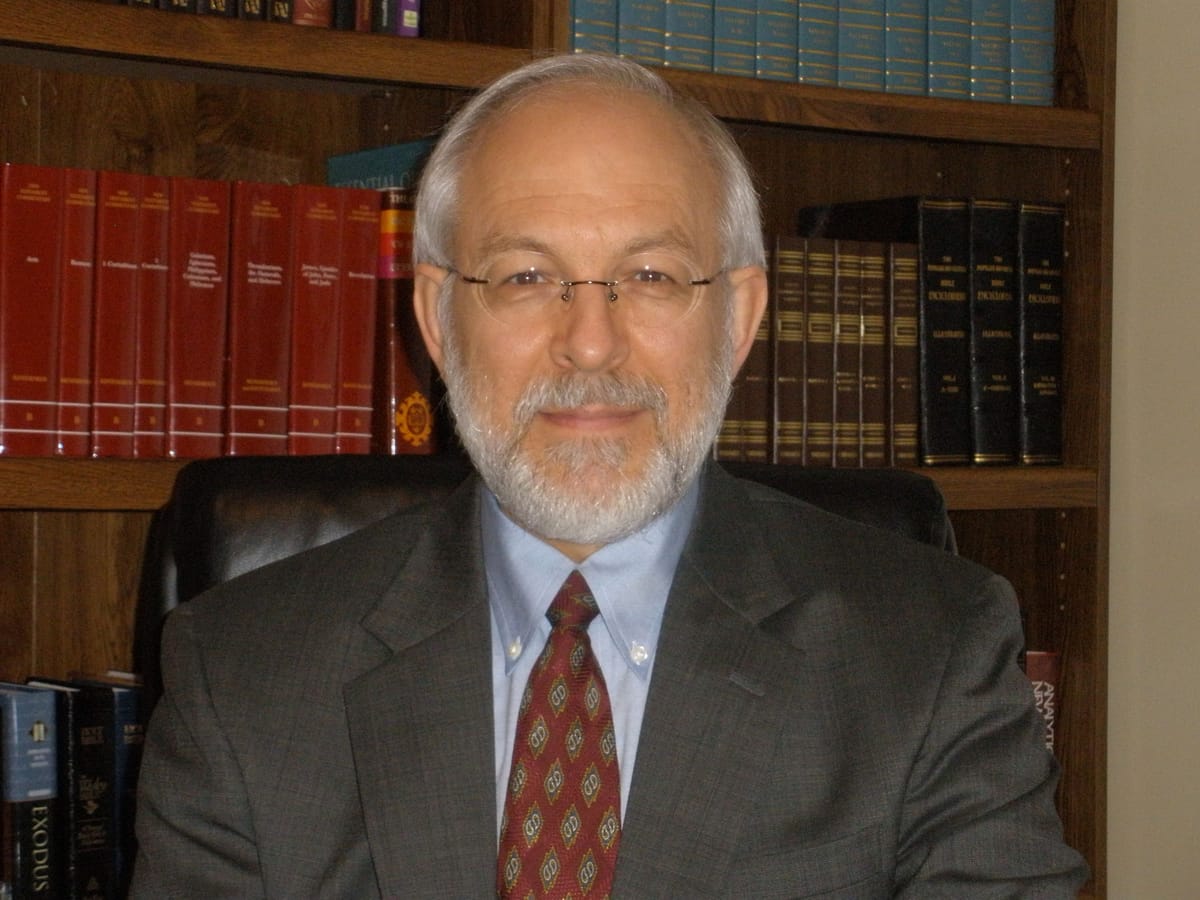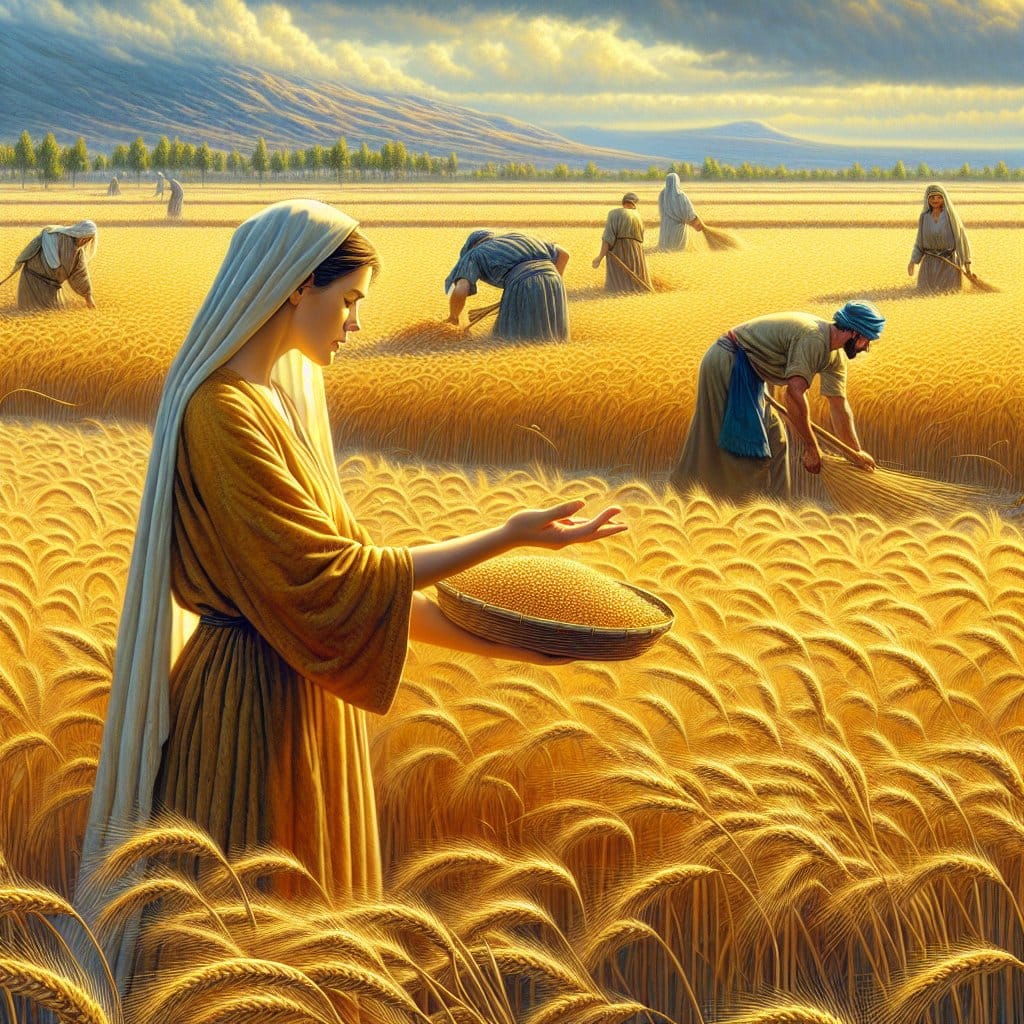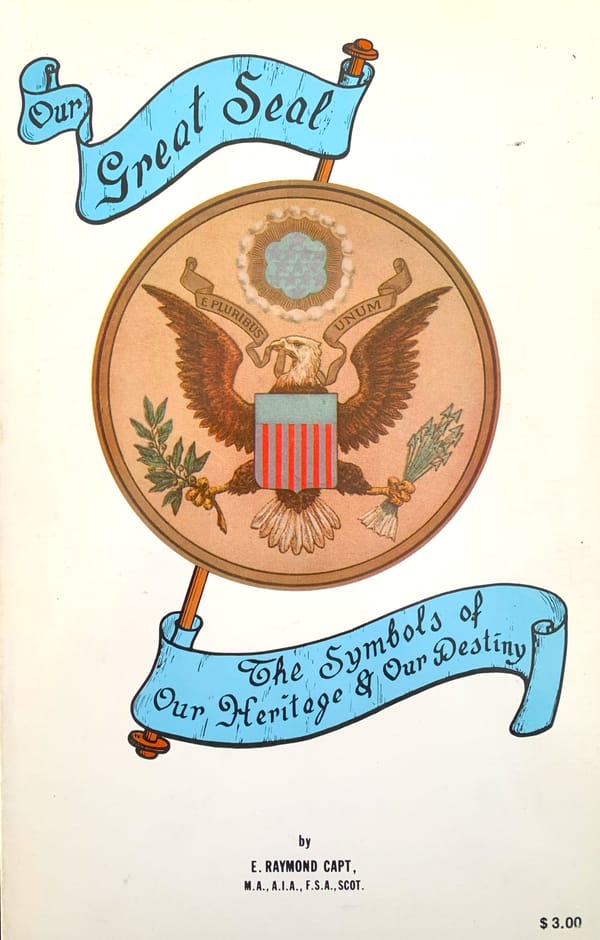Before we focus in on the barley-type aspect, we first need to address a very common and very important false teaching concerning Ruth. The church world in general follows the same line of thought such as this found in the Amplified Version’s notes. All emphases and comments within [brackets] are mine.
QUOTE: Ruth is a prophecy, [That much is absolutely true.] than which none could be more beautiful and engaging, of the entrance of the heathen world into the Kingdom of God. [No! Absolutely not! It is not a prophecy of any such thing!]
She comes forth out of Moab an idolatrous people, full of wantonness and sin. [That is true, the Moabites were such.] and is herself, so tender and pure. In a land where dissolute sensuality formed one of the elements of idol worship, the woman appears as wife and daughter, chaste as the rose of spring and unsurpassed in these relations by any other (human) character in the Holy Writ.
Ruth’s confession of God and His people originated in the home of her married life. It sprang from the love with which she was permitted to embrace Israelites. The conduct of one Israelitish woman, Naomi, in a foreign land, was able to call forth a love and a confession of God like that of Ruth. Ruth loved the woman, Naomi, and is thereby led to the God whom that woman confesses. END QUOTE
The Amplified Version footnote was quoting from Lange’s Commentary and it is very misleading! Likewise, Easton’s Bible Dictionary has this in its entry on Moab.
QUOTE: The story of Ruth, however, shows the existence of friendly relations between Moab and Bethlehem. By his descent from Ruth, David may be said to have had Moabite blood in his veins. END QUOTE
Similarly, such conclusions about Ruth’s ancestry abound in orthodox theology and we admit we are going against the vast majority. Yes, we take issue with them because, first of all, of all the families in the region of ancient Israel, the only lineages singled out that Ye shall not make marriages with them—were the cursed lineages of the Ammonites, Moabites, and Canaanites.
Although it is not found in any single particular verse, the Bible shows by putting two and two together that Ruth was almost certainly an Israelite woman. It is true that she was a Moabitess, but notice this. That vast majority of scholars all assume she was a Moabitess by physical ancestry. They offer no proof.
The word “Moabitess” occurs only six times in the Bible and five of the six occasions refer to Ruth. Here is the meaning of the word in the Hebrew Lexicon, QUOTE: H4125 Moabite 1) an [sic] citizen of Moab 2) an inhabitant of the land of Moab END QUOTE
We have put two and two together (i.e., by comparing Scriptures and using God-given logic) and conclude she was almost certainly a Moabitess by geography, but not by ancestry. I have done a detailed study on this topic. It is available in video format due to the extensive use of maps/graphics. Ask for the DVD (D-102) Ruth, the Israelite. It runs 95 minutes, $12 + $7 s & h.
Now let’s look at Ruth, the Barley Bride. The story of Ruth is of course, a literal and historical series of events. One can read and study the story on that level alone and enjoy its poignancy.
But it is my firm conviction that the Bible has many levels of understanding, and other levels or layers can be just as true as the literal level. So we are going to look at the story as an allegory. Ruth, represents Israel, but only a part of Israel. Which part? The Barley Company.
She represents godly Israelites who live in the midst of spiritual filth and spiritual disease. No, she does not live in the suburbs of Sodom; she lives in the midst of an idolatrous Israel people!
Remember that Ruth 1:1 said: In the days when the judges ruled, ... So this is obviously after the time that the children of Israel had come across the Jordan and under the leadership of Joshua, they had conquered the promised land.
However, even before the period of the judges began, even before Joshua died, he exhorted the Israel people in his final address to “Put away the strange gods which are among you.” Joshua 24:23
Obviously, the Israelites were already worshipping idols, false gods! And then follows the period of the judges, about a 400-year period before Saul comes to the throne. The time of the story of Ruth is about exactly in the middle of this period of “when the judges ruled.”
At this time, we are told, there was a famine in the land of Judah, so Elimelech and his wife, Naomi, and their two sons went from the country area of Bethlehem in the land of Judah across the Jordan River to the land which was called “Moab.” But there were no Moabites there anymore!
They had been driven out over a century and a half before. This land had been allotted to the Israelite tribes of Reuben, Gad, and the half-tribe of Manasseh—and yet, they too had indeed sunken into idolatry. But Ruth, who lived in the midst of this spiritually-polluted environment, was unlike many of her fellow Israelites of those three tribes.
She was looking for truth. Jesus said “I am the way and the truth.” Ruth was what we could call an “Old Testament Christian.” She was looking for her Savior, looking for truth, looking for the true God.
In her mother-in-law, Naomi, Ruth found a woman of great faith. So instead of remaining with her sister-in-law, Orpah, in the land of Moab, Ruth returned with Naomi to Bethlehem.
As an illustration, what happened here with Ruth and Naomi can be likened to a hypothetical situation when our forefathers were in the European nations of several centuries ago. Let’s say Naomi and Elimelech were living in Germany as their homeland.
But there arises a famine in Germany, so they decide to go up across the border into Denmark or up across the water into Sweden. They did not go into a land of unrelated people. So it was when Naomi and Elimelech crossed the river into the land of Moab, the inhabitants of the land of Moab were not Moabites. They were kinfolk. They were other tribes of Israelites.
And so then after the famine is over in Germany, Naomi, the mother-in-law, comes back with a Swedish or Danish girl who comes back down to live with her in Germany. That is what we have here. The lineage of Ruth is the line from which the Savior came. But we do not have a woman from a cursed lineage, as so many churches and blind theologians teach.
The Moabites were a cursed lineage because they were the offspring of Lot’s incestuous relationship with his daughter. It borders on blasphemy to say that Jesus would come from a polluted, mixed blood, mongrel family line. His lineage was pure and undefiled.
That is one reason why the genealogies in the Gospels are so precise. [For those who might think that Rahab the harlot of Jericho was also in Christ’s lineage, order our single lecture on CD #219: Rahab the Harlot: Ancestor of Christ? $5 + $7 s & h.]
So we see that Ruth comes with Naomi to Naomi’s home in Bethlehem. Bethlehem means “house of bread.” Jesus said: “I am the bread of life.” …which is a double witness for Ruth’s Old Testament Christianity. She comes to Bethlehem, the House of Bread; allegorically, she comes to Jesus Christ.
In chapter two we find Ruth goes out to glean in the barley fields. It was an Israelite law, a statute of Yahweh, that the farmers were to leave the comers of the fields unharvested so that the poor people of the land could gather the gleanings. Being very poor now, this is what Ruth was doing. She had to go out and support herself and Naomi so that they would have food.
Chapter two is also where we see the introduction of the man Boaz. He is a wealthy landowner in the Bethlehem area, a close relative of Elimelech. So Ruth is out there gleaning in the barley field of Boaz. As we saw earlier, barley is the grain that matures earlier than the rest and so this again identifies Ruth with the barley.
On another level, a corporate level, it symbolizes those Israelites in the Barley Company, the Firstfruits Company, the Overcomers. She represents those who hear and respond to the Good Shepherd’s call sooner than the rest of Christian believers. Many of the rest of the sheep over there across the river Jordan were in idolatry following the foreign gods.
Ruth 3:1 (KJV, unless otherwise noted) Then Naomi, her mother-in-law, said unto her: My daughter, shall I not seek rest for thee that it may be well with thee.
The New International Version (NIV) gives it thus:
My daughter, should I not try to find a home for you where you will be well provided for?
Ruth 3:2a And now is not Boaz of our kindred, with whose maidens thou wast?
Boaz had already shown kindness to Ruth. Back in chapter one, Naomi had suggested to the young widows from the land of Moab, Ruth and Orpah, to go back and stay with your people. She says, even if I were to get pregnant tonight and have sons, would you wait until they grew up to provide husbands for you?
Naomi was referring to Yahweh’s law that the next of kin, the brother of the dead husband, should raise up the seed to continue the name of that family. (Deuteronomy 25: 5-10)
She pleads, I am too old to have children and besides, it would be too long for you to wait, so, please, just go back. And Ruth says, no, I will go back with you. And so Naomi now finds Boaz, one of the near relatives of her deceased husband. She says to Ruth:
Ruth 3:2b Behold he, [Boaz] winnoweth barley tonight in the threshing floor.
Boaz is a type of Christ. There are many types of Christ in the Old Testament. Joseph is a type of Christ. Isaac is certainly a type of Christ. King David is a type of Christ and I believe we will see in this study that Boaz is a type of Christ as well.
We see that Boaz will be winnowing barley tonight in the threshing floor. Remember, Ruth represents the Barley Company ... coming willingly. There is no hard threshing, beating, bruising, and crushing necessary. Naomi continues her instructions:
Ruth 3:3a Wash thyself therefore, and anoint thee, and put thy raiment upon thee…
“Wash thyself therefore” Allegorically, Christians of the Barley Company, wash yourselves in the blood of the Lamb and anoint thee with the anointing of the Holy Spirit and put thy raiment upon thee. This relates to the bride in Revelation.
Revelation 19:7 Let us be glad and rejoice and give honor to him for the marriage of the lamb is come and his wife hath made herself ready.
Remember we talked in part one about the fulfillment of the Passover in Christ, the fulfillment of Pentecost in the Holy Spirit, and I said the fulfillment of Tabernacles and the rededication of Israel is ultimately to be fulfilled in the remarriage of Israel to her Husband, the Lamb.
Rev. 19:8 And to her was granted, that she should be arrayed in fine linen, clean and white, for the fine linen is the righteousness of the saints.
So back in Ruth, put thy raiment upon thee, or as the Amplified Version says Put on your best clothes… We are clothed in His righteousness by our acceptance, our faith in the Savior. It is not based on our works, but rather our works of obedience to His commandments are the proof of the relationship to Christ. Continuing in the book of Ruth:
Put thy raiment upon thee and get thee down to the floor: But make not thyself known unto the man until he shall have done eating and drinking.
In Matthew 26, at the Last Supper, the Savior says:
Matthew 26:29 But I say unto you, I will not drink henceforth of this fruit of the vine, until that day when I drink it new with you in my Father’s kingdom.
At the Last Supper the Savior had finished eating and drinking when He made that statement. So Ruth is not to make herself known until he shall have finished eating and drinking. Ruth is soon going to present herself for betrothal to the near kinsman.
Just as in the allegorical sense, the Bride Israel, cannot present herself “without spot or wrinkle” for prospective remarriage until Christ finished eating and drinking; i.e., until He completed that which the eating and drinking symbolized: the blood sacrifice of the New Covenant. Once that sacrifice was accomplished, only then could Paul say:
2 Corinthians 11:2 For I am jealous over you with godly jealousy: for I have espoused you to one husband, that I may present you as a chaste virgin to Christ.
By faith in Christ’s accomplished work, the Father reckons us as though we were righteous, as “chaste virgins.” Continuing in Ruth…
Ruth 3:4 And it shall be when he lieth down that thou shall mark the place where he shall lie and thou shalt go in and uncover his feet…
How are we to approach God? We come to him by appearing at the foot of the cross or more symbolically perhaps, we go in and uncover and lie down at his feet in repentance and humility.
Ruth 3:4b And lay thee down and he will tell thee what thou shalt do.
Accept your Savior/Husband and He will guide you by His Holy Spirit and tell you what you shall do.
Ruth 3:5 And she said unto her, All that thou sayest unto me I will do.
This is reminiscent of Exodus 19:8. The children of Israel out at Mt. Sinai with Moses acting as the minister between the initial marriage of Yahweh to His people Israel. In this wedding ceremony the minister, Moses, said to the prospective bride, national Israel: “Here’s the covenant, do you accept it?”
And the children of Israel responded as a bride does, saying: “I do.” They said “all that Yahweh hath spoken, we will do.” Here it is paralleled or reflected in the story of Ruth, a part of Israel that comes first to the knowledge of, and to maturity in the Savior. “All that thou sayest unto me I will do.”
6 And she went down unto the floor, and did according to all that her mother in law bade her. And she went down unto the floor and did according to all that her mother--in-law bade her.
7 And when Boaz had eaten and drunk, and his heart was merry, he went to lie down at the end of the heap of corn: and she came softly, and uncovered his feet, and laid her down.
The King James Version says “corn,” but it is not that stuff from which cornflakes are made. It simply means grain, and in this case, barley. So Boaz went to lie down at the end of the heap of the barley, and she came in softly and uncovered his feet and laid herself down at his feet.
So here, after the Savior has given His life, He is lying down beside or next to the heap of grain, the barley, the Firstfruits. Recall that when the Savior made His supreme sacrifice there were the handful of disciples with him who deserted him momentarily.
They were the Firstfruits, along with the rest of the 120 on the day of Pentecost. This original band of saints went out and began evangelizing. They were all part of that Firstfruits Company in that era.
I believe that throughout history from that time until now, there has always been a small remnant, the Barley Company, the Firstfruits Company, who are winnowed with the Holy Spirit and who try to be food, to be the barley, the rejuvenating food for their brethren, the rest of the children of Israel.
(To be continued.)
~END~




